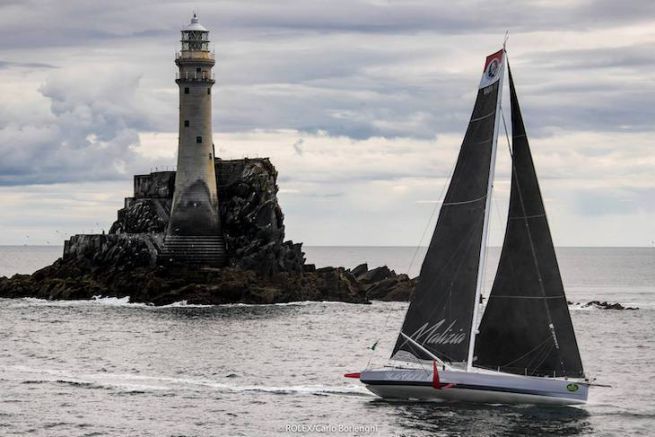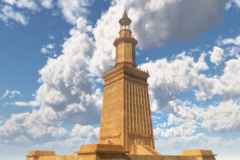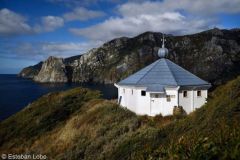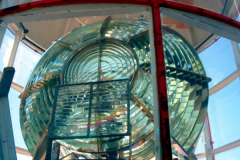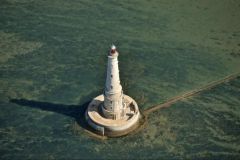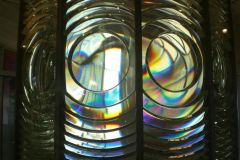The last Irish symbol before America
Named "Teardrop of Ireland" which means "tear of Ireland" it is located at 51¬į 23,3 'north and 9¬į 36,1'west, 7 km south-west of Cape Clear and Mizen Head, in Cork County. It was the last thing Irish immigrants saw of their country as they sailed to America, hence its nickname. In Irish, the Fastnet Rock is called ‚euros Carraig Aonair ‚euros or the lost rock. It is composed of clay and slate with veins of quartz and rises to 30 m above the lowest sea level.
Cape Clear, the lighthouse of fog
From 1818 to 1854, the lighthouse that signals the southwest coast of Ireland is located at the top of the cliffs south of Cape Clear Island. Unfortunately, the latter is too far from the dangers, too high and therefore too often obscured by fog. The sinking of the American ship ‚euros Stephen Whitney near Crookhaven by a foggy night in December 1847 ‚euros reinforces the fact that the lighthouse does not fulfill its role. 92 passengers and crew members out of the 110 people on board the ship died in this shipping accident.

Fastnet, the replacement for Cap Clear
The Corporation of Trinity House (British Lighthouse Services) decided in 1848 to reposition the lighthouse either lower down on the western end of the island or on Fastnet Rock, 6.5 km southwest of Cape Clear. The second choice was made. New materials were used for the construction of the lighthouse and the keeper's quarters: bolted iron plates with a brick interior.
The lighthouse was lit for the first time on January 1, 1854, and Cape Clear was stopped.
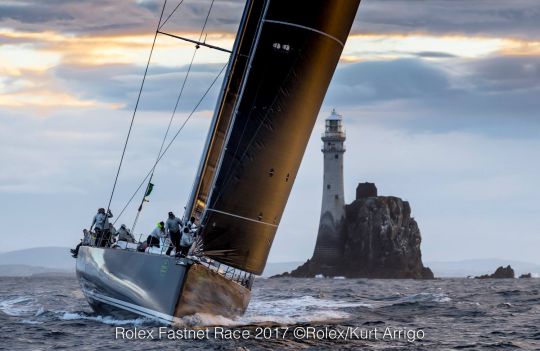
An additional formwork
It soon became apparent that the cast iron was not strong enough. A new cast iron outer casing was built around the original tower up to the second floor. The work was completed in 1868.
A similar cast iron lighthouse at Calf Rock, at the southern entrance to Bantry Bay, completed in 1866, was similarly reinforced in 1872. Unfortunately, in October 1881, a storm tore down the unreinforced structure.
It was finally realized that, given its location and importance, the Fastnet lighthouse was not strong enough. In 1891, the Board of Directors decided to replace the cast iron tower with a granite tower and to install a light as powerful as possible.
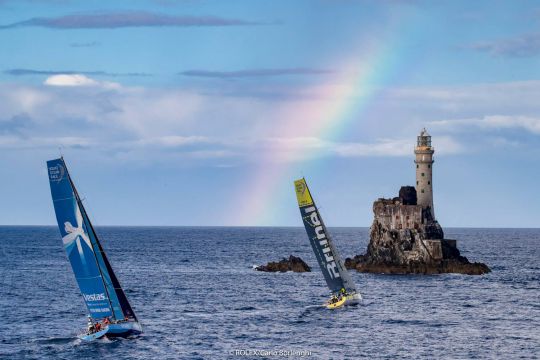
A granite tower for the new Fastnet
This Cornish granite construction is designed to resist the force of the Atlantic according to the plans of its engineer, William Douglass. The Fastnet became the highest and widest stone lighthouse in Ireland and Great Britain. Its realization is monumental and is completed in 1904. Each stone is carefully connected to another, making the building a huge monolith. Each of the 2‚euros074 stones weighs between 1¬ĺ and 3 tons.
This new lighthouse is put into service on June 27, 1904; the cast iron tower is dismantled. On May 10, 1969, electricity replaced the kerosene used until then to burn the lamp. The lighthouse now has a range of 28 miles. A foghorn ‚euros installed on the lighthouse in 1887 ‚euros is transposed on the new tower in 1904, before being replaced by an electric horn in 1974.
The headlight is automated at the end of March 1989 and on January 11, 2011, the fog horn is removed.
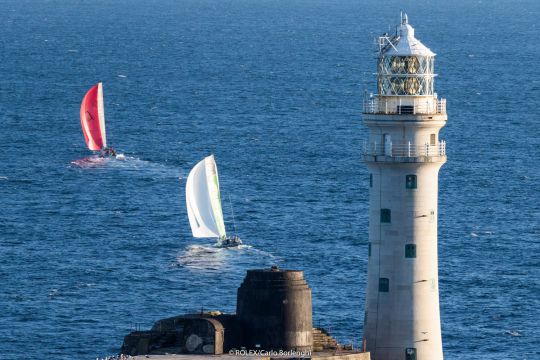
Six guards
Originally, there were six keepers to manage the Fastnet Rock: four on the rock taking turns and two on land. They were relieved twice a month, each man staying four weeks on the lighthouse, working in pairs. They were then entitled to two weeks off.
One of the men had to stay on guard all day watching the fog and pointing out the way to passing ships. He would then inform his colleague who would activate the fog signals.
